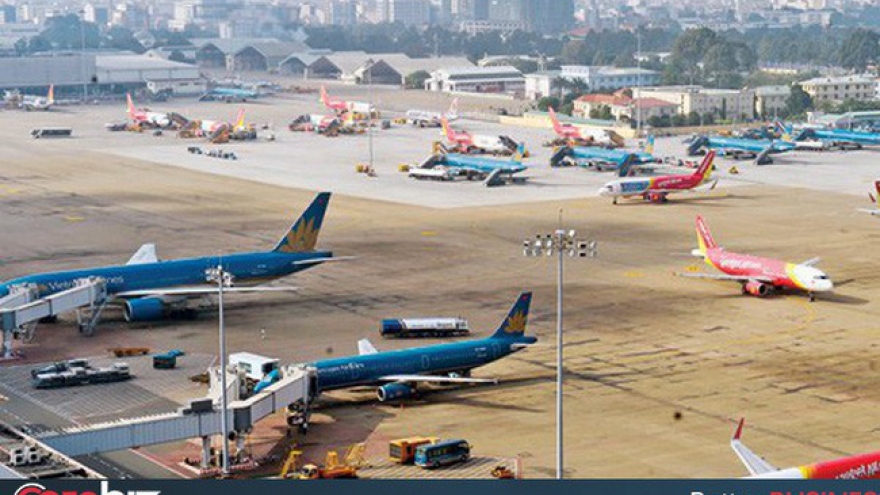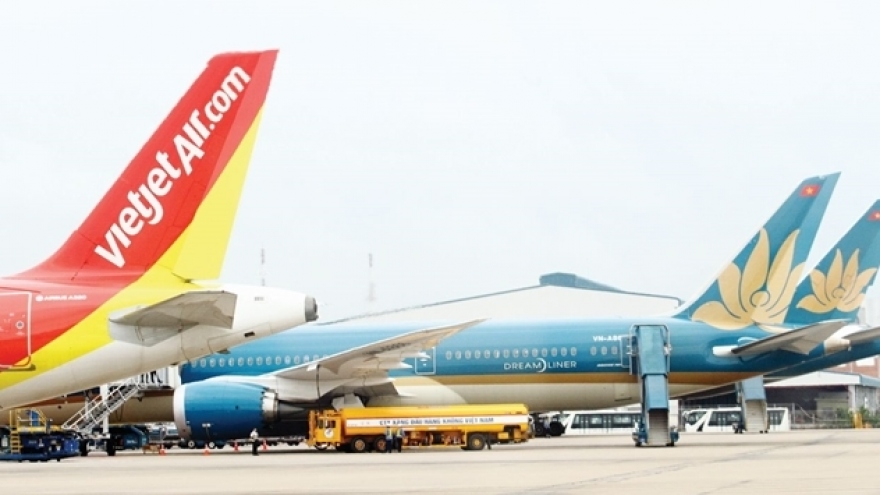Aviation market records stable growth
The number of passengers going through Vietnamese airports is estimated to hit 106 million by the end of this year, a rise of 12.9 percent year-on-year, according to the Civil Aviation Authority of Vietnam (CAAV).
 |
| An airplane of Vietnam Airlines at the Noi Bai Airport |
As of mid-November this year, Vietnam’s domestic carriers reported about 12,410 delayed flights at the Noi Bai International Airport, equivalent to 14.13% of total flights, according to statistics from the Northern Airports Authority (NAA).
The number of cancelled flights was 318, lower than last year’s figure.
Low-cost airline Vietjet Air had the highest number of delayed and cancelled flights with 5,922 and 51, while the respective figures for national flag carrier Vietnam Airlines were 4,045 and 89.
Budget carrier Jetstar Pacific reported 2,155 delayed and 15 cancelled flights, and Vasco had 285 and 162, respectively.
Private air carrier Hai Au Aviation recorded three delayed flights and one cancelled during the period.
The on-time performance index hit 85.87%, said the NAA.
Meanwhile, the Southern Airports Authority said there were 20,145 delayed and 481 cancelled flights at the Tan Son Nhat International Airport during the first 10 months of the year.
The number of delayed flights increased 30.3% against the same period last year.
The late return of planes was the main cause of delays and cancellations. Other reasons include airports’ limited infrastructure and services, flight management and operation, weather, and technical issues.
As many as 68 foreign airlines from 25 countries and territories across the five continents are operating regular international flights to Vietnam. They, together with three Vietnamese airlines – Vietnam Airlines, Vietjet Air, and Jetstar Pacific – are operating 130 regular international routes and charter flights.
On the domestic market, Vietnam Airlines, Vietjet Air, Jetstar Pacific, and Vietnam Airlines’ affiliate Vasco are running 48 routes connecting Hanoi, Da Nang, and Ho Chi Minh City with 18 local airports.



